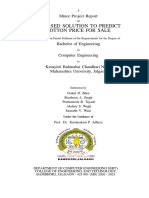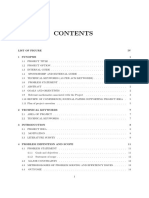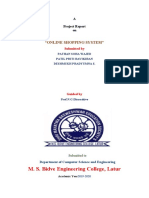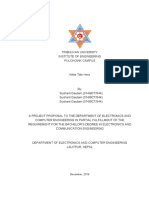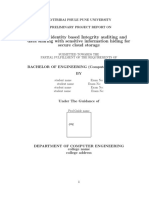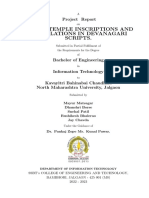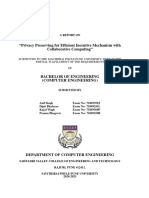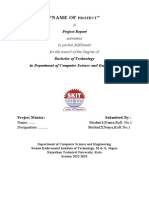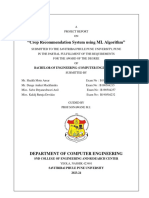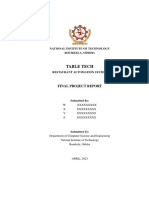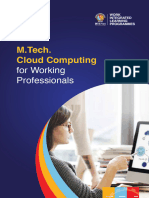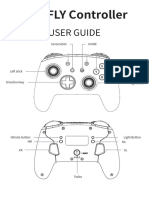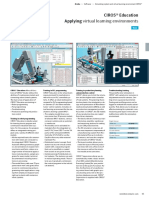0% found this document useful (0 votes)
92 views32 pagesHadoop MapReduce Cloud Service Model
This project report describes the deployment of Hadoop in a virtual machine environment to enable distributed processing of large datasets. The project aims to develop a new MapReduce cloud service model for data analytics that can automatically select optimal cluster configurations based on job profiling, improving resource utilization and lowering costs compared to existing approaches. The report includes sections on literature review, problem definition, software requirements specification, system design including architecture, flow charts, diagrams, implementation, testing and results. It was completed by four students at Sahyadri College of Engineering and Management, Mangaluru, India under the guidance of their project guide for their Bachelor of Engineering degree.
Uploaded by
Shreyith J AminCopyright
© © All Rights Reserved
We take content rights seriously. If you suspect this is your content, claim it here.
Available Formats
Download as PDF, TXT or read online on Scribd
0% found this document useful (0 votes)
92 views32 pagesHadoop MapReduce Cloud Service Model
This project report describes the deployment of Hadoop in a virtual machine environment to enable distributed processing of large datasets. The project aims to develop a new MapReduce cloud service model for data analytics that can automatically select optimal cluster configurations based on job profiling, improving resource utilization and lowering costs compared to existing approaches. The report includes sections on literature review, problem definition, software requirements specification, system design including architecture, flow charts, diagrams, implementation, testing and results. It was completed by four students at Sahyadri College of Engineering and Management, Mangaluru, India under the guidance of their project guide for their Bachelor of Engineering degree.
Uploaded by
Shreyith J AminCopyright
© © All Rights Reserved
We take content rights seriously. If you suspect this is your content, claim it here.
Available Formats
Download as PDF, TXT or read online on Scribd
/ 32



